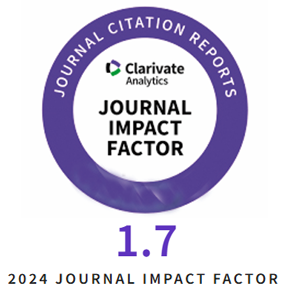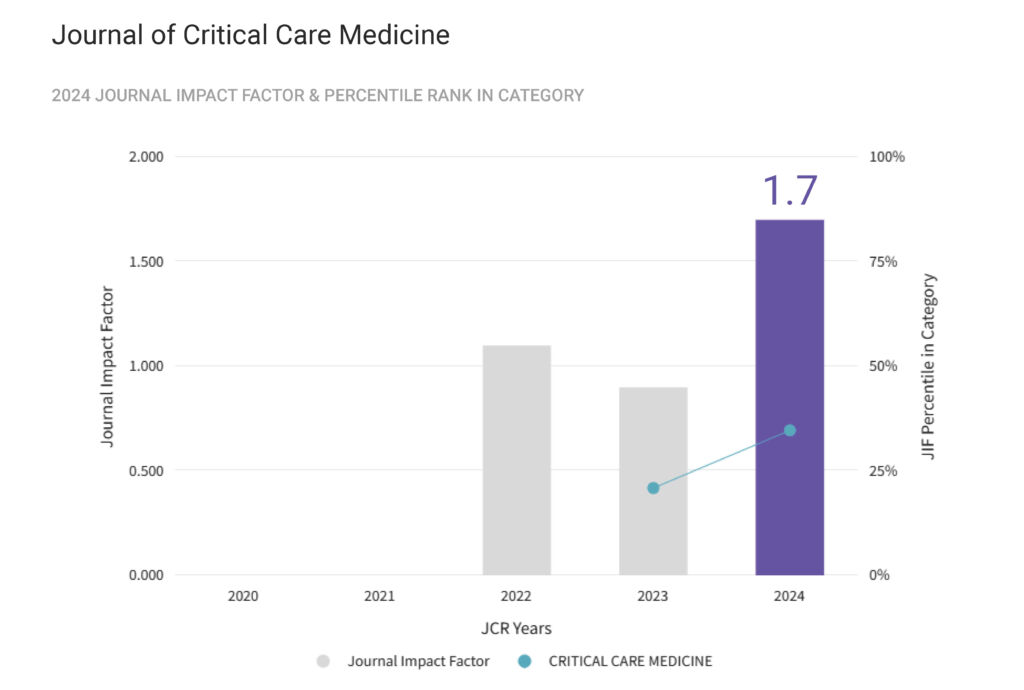Introduction: The rapid worldwide spread of COVID-19 motivated medical professionals to pursue and authenticate appropriate remedies and treatment protocols. This article aims to analyze the potential benefits of one treatment protocol developed by a group of care providers caring for severe COVID-19 patients.
Methods: The clinical findings of COVID-19 patients who were transferred to a specialized care hospital after unsuccessful treatment in previous institutions, were analyzed. The specialized care hospital used a treatment protocol including hydroxyurea, a medication commonly used for sickle cell treatment, to improve respiratory distress in the COVID-19 patients. None of the COVID-19 patients included in the analyzed data were diagnosed with sickle cell, and none had previously taken hydroxyurea for any other conditions.
Results: In all presented cases, patients reverted to their baseline respiratory health after treatment with the hydroxyurea protocol. There was no significant difference in the correlation between COVID-19 and hydroxyurea. However, deaths were extremely low for those taking hydroxyurea.
Conclusions: Fatality numbers were extremely low for those taking hydroxyurea; death could be attributed to other underlying issues.
Tag Archives: COVID-19
Critical Care Workers Have Lower Seroprevalence of SARS-CoV-2 IgG Compared with Non-patient Facing Staff in First Wave of COVID19
Introduction: In early 2020, at first surge of the coronavirus disease 2019 (COVID-19) pandemic, many health care workers (HCW) were re-deployed to critical care environments to support intensive care teams looking after patients with severe COVID-19. There was considerable anxiety of increased risk of COVID-19 for these staff. To determine whether critical care HCW were at increased risk of hospital acquired infection, we explored the relationship between workplace, patient facing role and evidence of immune exposure to the severe acute respiratory syndrome coronavirus 2 (SARS-CoV-2) within a quaternary hospital providing a regional critical care response. Routine viral surveillance was not available at this time.
Methods: We screened over 500 HCW (25% of the total workforce) for history of clinical symptoms of possible COVID19, assigning a symptom severity score, and quantified SARS-CoV-2 serum antibodies as evidence of immune exposure to the virus.
Results: Whilst 45% of the cohort reported symptoms that they consider may have represented COVID-19, 14% had evidence of immune exposure. Staffs in patient facing critical care roles were least likely to be seropositive (9%) and staff working in non-patient facing roles most likely to be seropositive (22%). Anosmia and fever were the most discriminating symptoms for seropositive status. Older males presented with more severe symptoms. Of the 12 staff screened positive by nasal swab (10 symptomatic), 3 showed no evidence of seroconversion in convalescence.
Conclusions: Patient facing staff working in critical care do not appear to be at increased risk of hospital acquired infection however the risk of nosocomial infection from non-patient facing staff may be more significant than previous recognised. Most symptoms ascribed to possible COVID-19 were found to have no evidence of immune exposure however seroprevalence may underrepresent infection frequency. Older male staff were at the greatest risk of more severe symptoms.
COVID -19 complicated by Acute Respiratory Distress Syndrome, Myocarditis, and Pulmonary Embolism. A case report
A 49-year-old female Qatari woman, with no past medical history, presented at a hospital complaining of a history of cough and shortness of breath. The patient tested positive for severe acute respiratory syndrome (ARDS) and COVID-19. Subsequently, her course of treatment was complicated by severe acute respiratory distress syndrome, pulmonary embolism and severe myocarditis requiring treatment with venous-arterial extracorporeal membrane oxygenation as a bridge to complete recovery.
Challenges in Management of the Brain-Dead Organ Donor During the COVID-19 Pandemic
Starting in Wuhan, China [1], the infection caused by the novel SARS-CoV-2 virus became a public health issue when, due to the extreme contagiousness of this virus, a pandemic has been declared [2], putting a strain on both the global medical staff as well as the authorities in an effort to better manage an unprecedented situation in the modern era. Looking at the society we are living in, we can easily see that the COVID-19 pandemic has brought impressive social, economic, political, cultural and medical changes as well as personal ones; I believe that the perspectives and priorities of many of us have changed.
Before discussing the transplant activity, mainly the one regarding diagnosis and maintenance of the brain-dead organ donor patient, an activity that has been carried out for many years in Anesthesiology and Intensive Care Clinics, to which many of us are devoted, practicing it with deep respect, we need to review the daily activity. As is well known, the work effort in intensive care units is extremely demanding both mentally and physically. It involves the care of critical patients with severe decompensated pathologies, requiring maximum therapeutic management, special attention, continuous specific monitoring as well as the use of advanced medical and pharmacological techniques. The new measures and regulations, personal protective equipment, structural changes and working protocols implemented to prevent and limit COVID-19 infection, as well as the rigors imposed by the care of these patients have created additional stress for the medical staff. [More]
Cerebellar Stroke in a COVID-19 Infected Patient. A Case Report
Background: Recent studies have reported that COVID-19 infected patients with stroke, who were often in the older age group, had a higher incidence of vascular risk factors, and more severe infection related respiratory symptoms. These observations provided little evidence to suggest that COVID-19 infection is a potential causative factor for stroke. This report describes a young patient with a cerebellar stroke secondary to COVID-19 infection.
Case presentation: A 45-year old male presented at a hospital, reporting a two-day history of headache, vertigo, persistent vomiting, and unsteady gait. Physical examination revealed gaze-evoked nystagmus on extraocular movement testing, left-sided dysmetria and dysdiadochokinesia. He was diagnosed with a left cerebellar stroke. An external ventricular drain was inserted, and sub-occipital craniectomy was performed to manage the effects of elevated intracranial pressure due to the extent of oedema secondary to the infarct. He also underwent screening for the COVID-19 infection, which was positive on SARS-COV-2 polymerase chain reaction testing of his endotracheal aspirate. Blood and cerebrospinal fluid samples were negative. After the surgery, the patient developed atrial fibrillation and had prolonged vomiting symptoms, but these resolved eventually with symptomatic treatment. He was started on aspirin and statin therapy, but anticoagulation was withheld due to bleeding concerns. The external ventricular drain was removed nine days after the surgery. He continued with active rehabilitation.
Conclusions: Young patients with COVID-19 infection may be more susceptible to stroke, even in the absence of risk factors. Standard treatment with aspirin and statins remains essential in the management of COVID-19 related stroke. Anticoagulation for secondary prevention in those with atrial fibrillation should not be routine and has to be carefully evaluated for its benefits compared to the potential harms of increased bleeding associated with COVID-19 infection.
Post-Traumatic Stress Disorder and Burnout in Healthcare Professionals During the SARS-CoV-2 Pandemic: A Cross-Sectional Study
Introduction: Healthcare professionals who are directly involved in the diagnosis, treatment, and general care of patients with SARS-CoV-2 are at risk of developing adverse psychological reactions. A cross-sectional study of healthcare professionals aimed to determine the impact of the SARS-CoV-2 pandemic on the mental health of healthcare professionals in two of the largest referral hospitals in Athens, Greece.
Methods: The study was conducted in the two largest SARS-CoV-2 referral hospitals in Athens, Greece. An assessment and the interrelationship of post-traumatic stress disorder, using the Impact of Event Scale-Revised [IES-R]) and burnout, using the Maslach Burnout Inventory [MBI]) was carried out.
Results: A total of 162 subjects were enrolled in the study. Fifty-six (35%) had an IES-R score > 33, suggesting post-traumatic stress disorder. Forty-nine (30%) had an MBI score > 27. Seventy-five (46%) had a personal accomplishment score of < 33 and 46 (28%) had a depersonalization score >10. Stepwise backward logistic regression revealed that the only independent variable that was retained regarding the presence of post-traumatic stress disorder was the emotional exhaustion score of the MBI (at a cut-off of 24 in this scale, the 95% CI of the odds ratio for the presence of post-traumatic stress disorder was 1.077-1.173).
Conclusions: In this sample of first-line Greek healthcare professionals against SARS-CoV-2, most of them were proven to be quite resilient to this challenge. One-third of them had post-traumatic stress disorder, which depended on their degree of emotional exhaustion. Healthcare professionals, as represented by this study, performed their duties without feeling helpless and developing adverse psychological reactions.
Atypical Variant of Guillain Barre Syndrome in a Patient with COVID-19
Objective: A rare variant Miller Fisher Syndrome overlap with Guillain Barre Syndrome is described in an adult patient with SARS-COV-2 infection.
Case Presentation: The clinical course of a 45-year-old immunosuppressed man is summarized as a patient who developed ataxia, ophthalmoplegia, and areflexia after upper respiratory infection symptoms began. A nasopharyngeal swab was positive for COVID-19 polymerase chain reaction. He progressed to acute hypoxemic and hypercapnic respiratory failure requiring intubation and rapidly developed tetraparesis. Magnetic resonance imaging of the spine was consistent with Guillain Barre Syndrome. However, the clinical symptoms, along with positive anti-GQ1B antibodies, were consistent with Miller Fisher Syndrome and Guillain Barre Syndrome overlap. The patient required tracheostomy and had limited improvement in his significant neurological symptoms after several months.
Conclusions: The case demonstrates the severe neurological implications, prolonged recovery and implications in the concomitant respiratory failure of COVID-19 patients with neurological symptoms on the spectrum of disorders of Guillain Barre Syndrome.
Right Heart Thrombus in an Adult COVID-19 Patient: A Case Report
Introduction: Right heart thrombus (RiHTh) can be considered a rare and severe condition associated with thromboembolic phenomena. A case is described of a COVID-19 patient presenting with an isolated thrombus in the right ventricle.
Case presentation: An 80-years-old Caucasian male was admitted in an intensive care unit (ICU) for COVID-19 related acute respiratory distress syndrome. The patient showed signs of hemodynamic instability, elevated cardiac troponin I and altered coagulation. On further assessment, a thrombotic mass near the apex of the right ventricle was detected. Moreover, the apex and the anteroseptal wall of the right ventricle appeared akinetic. Following the administration of a therapeutic dose of unfractionated heparin over a forty-eight hour period, re-evaluation of the right chambers showed that the thrombotic mass had resolved entirely.
Conclusion: COVID-19 patients could constitute a population at risk of RiHTh. Routine use of echocardiography and a multidisciplinary approach can improve the management of this condition.
Anticoagulation in COVID – 19: An Update
The novel coronavirus disease, 2019 (COVID – 19) evolved as an unprecedented pandemic. The severe acute respiratory syndrome-corona virus-2 (SARS-CoV-2) infection has been associated with significantly deranged coagulation parameters and increased incidence of thrombotic events. Deranged coagulation parameters, such as D-dimers and fibrin degradation products, can indicate a poor prognosis, and their measurement will help stratify the patients according to the disease severity, need of intensive care unit admission, and prediction of the clinical course. Gaps in understanding the natural history of the disease cause difficulties in tailoring therapies and optimizing the management of patients. Lack of specific treatment further complicates this situation. While thrombotic events can cause significant morbidity and mortality in patients, a focused approach to the prevention and treatment of venous thromboembolism (VTE) can, to a great extent, decrease the disease burden caused by thrombotic diseases. Pharmacological prophylactic anticoagulants and mechanical therapies such as pneumatic compression devices can help prevent venous thromboembolism and other thrombotic events. Thrombotic events due to COVID-19, their prevention and management, are the focus of this paper, with the prospect of providing insights into this relatively unexplored area.










